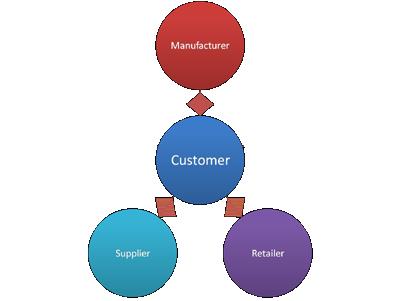A supply chain is a network of manufacturers, suppliers, distributors, transporters, storage facilities and retailers that perform functions like procurement and acquisition of material, processing and transformation of the material into intermediate and finished tangible goods, and finally, the physical distribution of the finished goods to intermediate or final customers.
Major Components of Supply ChainA supply chain may consist of variety of components depending on the business model selected by a firm. A typical supply chain consists of the following components:
- Customers: The customer forms the focus of any supply chain. A customer activates the processes in a supply chain by placing an order with the retailer.

